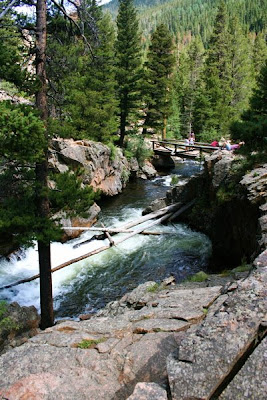Elevation: 10,515 – 12,541 ft
Elevation gain: 2,130 ft cumulative

You won’t find Pawnee Pass in any local trail guide, which is a shame because it is a beautiful trail filled with lakes, scraggy peaks, and a glimpse down the steepest grade I have yet to see in Colorado. Its distance and location within the Indian Peak Wilderness Area make accessible to anyone with a moderate amount of fitness.

You can do Pawnee Pass from either side of course. This report features the trip from the east side, leaving from the Long Lake trailhead. For those familiar with that name, you know this trail is in the Brainard Lake National Recreation Area. Expect heavy use even during the week. We got a slightly late start and did not arrive until 8:30 and the parking lot was already full on a Tuesday. Because Long Lake is a mere 0.25 miles up a flat trail, this trailhead is filled with old timers, bless every one of them, who are out for jaunt in the great outdoors. We really did not expect that type of crowd during the week and were not happy when we had to park a quarter mile away at the nearest picnic area. Now, we are young whippersnappers, relatively speaking anyway, and can certainly walk the additional distance, I just knew when this hike was over, that additional quarter of a mile would feel like three. Fortunately, this prognostication was only partially true. It felt like half a mile.

The first 1.2 miles of this hike border Long Lake. It is flat, well groomed but in the trees most of the time. There are only a few glimpses of the lake itself. Beyond the lake, the trail becomes rockier and begins to ascend in fits and starts as it heads towards Lake Isabelle. I realized upon reaching this lake that I had never been there, which considering its relatively short distance is amazing. At only 2 miles one way, Lake Isabelle is a gem that anyone can reach. I highly recommend the trip.

The trail to the pass breaks off shortly after reaching Lake Isabelle and begins to climb in earnest along an attractive creek. Through a series of gentle switchbacks it approaches a cleft in the rock that almost looked like a pass but is in fact a large, dramatic rock shelf. Upon reaching this shelf there are remarkable views into the gorge on the other side and Lake Isabelle behind. Intuitively, one would think that the trail would head up this gorge, but instead in winds its way up the large bulge of rock to the left of the shelf.

At the top of this bulge is an expansive flat area, which really does look like a pass. There are jagged peaks all around and it is hard not to stop, stare, and drool. This area, located at 12,000 ft is on one side of a large U-shaped bowl. The bowl is made up on the right by Shoshoni Peak (12,967 ft), Apache Peak (13,441 ft) straight ahead, and Navajo Peak (13,409 ft) off to the left. It was not until we dug out the trail map that we realized this was not the pass. It is so gorgeous, that we almost did not care.

Typically, we were worried about the building clouds and wondered how long it would take to reach the pass itself and whether we would have enough time. Some folks from Illinois met us in this area and said it was about another 45 minutes to the pass and so we decided to go for it.

It is deceiving, but the trail to the pass crosses this broad expanse and then heads up the very steep right hand side of the U. The journey is not difficult by any means since it is graced with a series of rather frustrating switchbacks that seem to make the journey twice as long as needed. I confess that at this point I was feeling pressure by the weather and zoomed up this part of the trail faster than necessary.

At the top is another broad expanse that is nestled between Shoshoni Peak and Pawnee Peak. It is only a short trip to the official sign that designates the pass. You will not want to stop here but head down the trail until it starts to descend the other side. This side of the pass looks like a 60-degree slope. I saw two backpackers and their dog descending the trail by scooting on their butts. That is steep folks. The left and right sides of this area is bordered by rock pinnacles that are dramatic in and of themselves, but combined with steep slope are truly breathtaking. At the bottom of this deep expanse is Pawnee Lake. We were almost there on our trip to Cascade Falls the month before, which was hard to imagine.

Pawee Peak (12,943 ft) is a short 0.5 miles away but alas at this point we decided the weather was getting too rough and we needed to descend. As it was we were hailed on when we returned to Lake Isabelle. I am bummed about missing that opportunity, but that is Colorado.

So erstwhile adventurers, put Pawnee Pass on your list. If the weather interferes, there are numerous milestones that are worthwhile destinations. That initial shelf, which is a short distance above Lake Isabelle, is going to be the destination of my next group alfresco dining. You could hold a graduation party up there and the views of Lake Isabelle are stunning. Nuf said…GO.














































